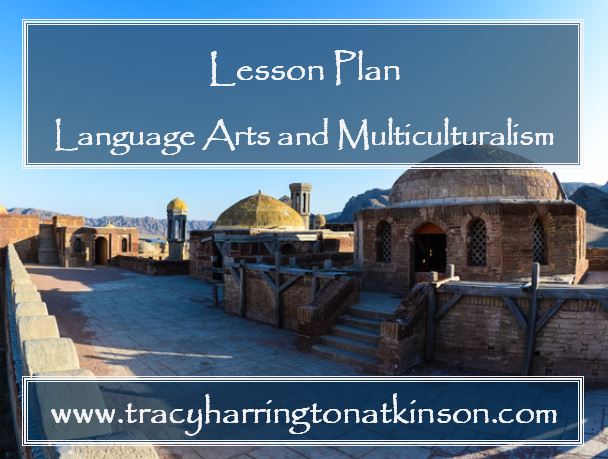Within this language arts unit, students will be encouraged to investigate their family histories. Students will actively pursue their heritage through interviewing, investigating genealogy online and researching their family cultural background.
 Nieto & Bode (2008) state “the more that students are involved in resisting complete assimilation while maintaining ties to their ethnic and linguistic communities, the more successful they will be in school” (p 330). A positive self-concept for every student is the foundation to academic achievement and success in education. Students must believe they can succeed (Malhi, 2012). This belief is largely based on their preconceived notions of the value of their culture to the larger dominant culture and society in general.
Nieto & Bode (2008) state “the more that students are involved in resisting complete assimilation while maintaining ties to their ethnic and linguistic communities, the more successful they will be in school” (p 330). A positive self-concept for every student is the foundation to academic achievement and success in education. Students must believe they can succeed (Malhi, 2012). This belief is largely based on their preconceived notions of the value of their culture to the larger dominant culture and society in general.
Grade Level: First through Seventh grade
Lesson Topic: Noting the similarities and differences of heritages, culture and race
Lesson Name: Family Heritage
Content Area Focus: Language Arts
Objectives
- Students will experience a positive learning environment which will bolster self-esteem and connection with their ethnic, cultural and heritage backgrounds.
- Students will develop interviewing techniques including question design, note taking and organizing the information.
- Links will be created between community, school, home, family and student.
- Students will critically evaluate the validity of information found on the internet.
- Students will refine questions first on the internet to discover valid and relevant information and how refining questions for an internet search are related to interviewing techniques and the importance of developing interview questions prior to an interview.
- Students will be encouraged to compare and contrast the similarities and differences between their heritages and families.

Click on image for more information on multiculturalism
Assessments
- Students will create a time line of important family events.
- Students will participate in journaling to record questions as they come to their minds. Journals may consist of pictures, doodles, thoughts, inspirations, questions, notes on research, etc. Students will be taught how investigators utilize journals in their profession.
- Students will develop a visual representation of their family tree including four generations or as many of the ancestors within the four generations they can locate. They can choose their method of demonstration through computer drawing programs, genealogical/family history programs or an individually created method such as posters.
- Scrapbook, either completed digitally or not, will be compiled including pictures, family stories, history, heritage and their family trees.
- Students may participate in storytelling where they may share their favorite story from their interviews.
- Students will create a PowerPoint heritage presentation. They may choose to do this individually or as groups.
- Displays will be created and exhibited at ‘Family Night.’ Displays will consist of their products. Families will be invited to share a favorite food from home.
- Students will be required to keep a project agenda to track their learning objectives and manage their time which will be included in a final portfolio.
- Students will compile a portfolio, both written and digital.
Instructional Strategies
As students begin their projects, they will be given a K-W-L chart (Gregory & Chapman, 2007). They will brainstorm what they already know about their family history, what the want to know about their heritage and they will be instructed to keep copious notes during the process. At the end of the project, before their ‘Family Night,’ students will be brought together for a whole group discussion to compare and contrast similarities and differences between their heritages.

KWL chart- free pdf
Also during the compare/contrast reflection at the end of the unit, students will be given a graphic organizer which highlights similarities and differences. As the discussion progresses, students will be asked to jot down things they notice and later record them in their heritage journals.
During this unit, a bulletin board will be put together demonstrating graphic organizers. A variety of examples will be shown on the board with copies of each for student use. Students will be required to use several different types of graphic organizers or design their own. The organizers will be included in their portfolios.
Throughout the unit, students will be organized into several different grouping options. Whole group will be used during introduction and debriefing as well as other vital times throughout the unit as deemed important by the teacher. Each student will also be assigned a partner. Each set of partners will be part of a group. Groups and partners will take into account the needs of the students based on their learning personalities as well as arranged so students can experience similarities and differences in heritage within their small groups.
Sources:
Gregory, G. & Chapman, C. (2007). Differentiated instructional strategies: One size doesn’t fit all. (2nd ed.). Thousand Oaks, CA: Corwin Press.
Malhi, R. (2012). Self-esteem and academic achievement. Retrieved from www.tqm.com.my/article5.htm
Nieto, S. & Bode, P. (2008). Affirming diversity: the sociopolitical context of multicultural education. Boston: Allyn and Bacon.
By Tracy Harrington-Atkinson
Tracy Harrington-Atkinson, mother of six, lives in the Midwest with her husband. She is a teacher, having taught elementary school to higher education, holding degrees in elementary education, a master’s in higher education and continued on to a PhD in curriculum design. She has published several titles, including Calais: The Annals of the Hidden, Lemosa: The Annals of the Hidden, Book Two, Rachel’s 8 and Securing Your Tent. She is currently working on a non-fiction text exploring the attributes of self-directed learners: The Five Characteristics of Self-directed Learners.

Comments are closed